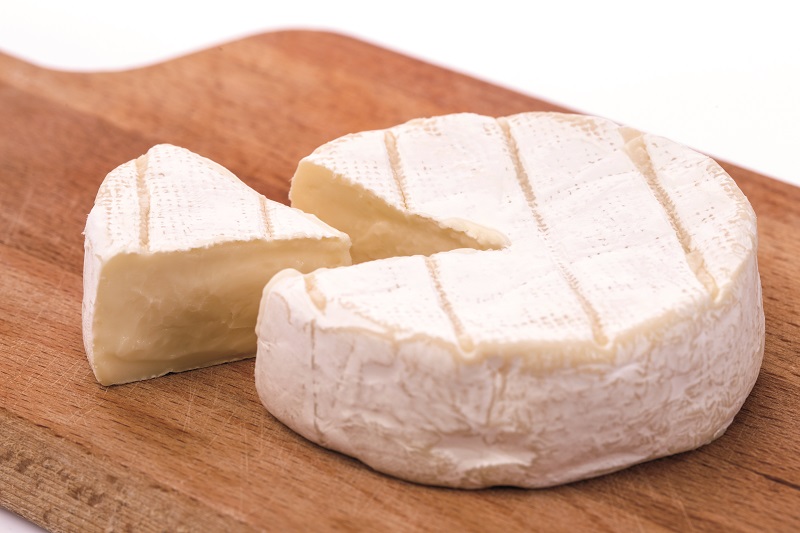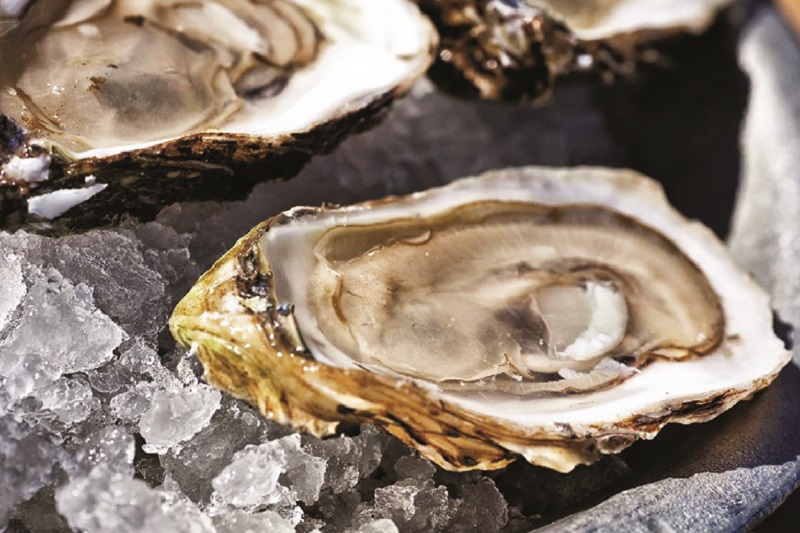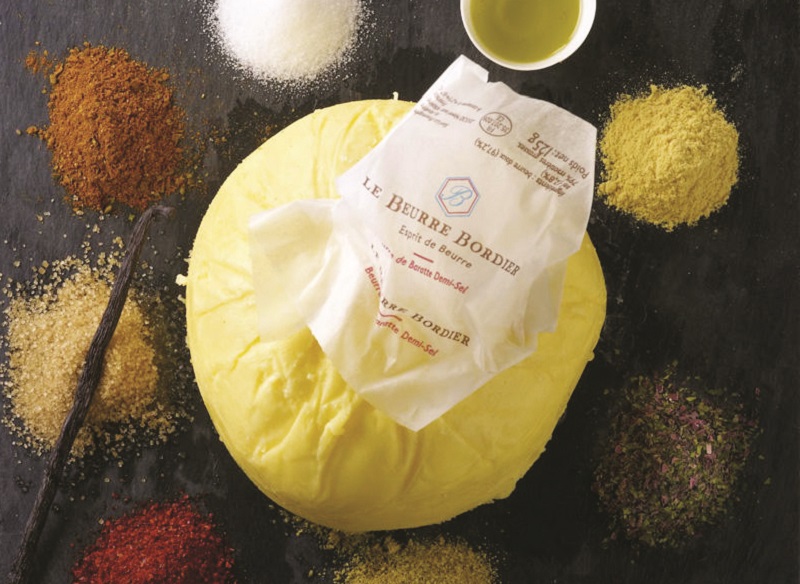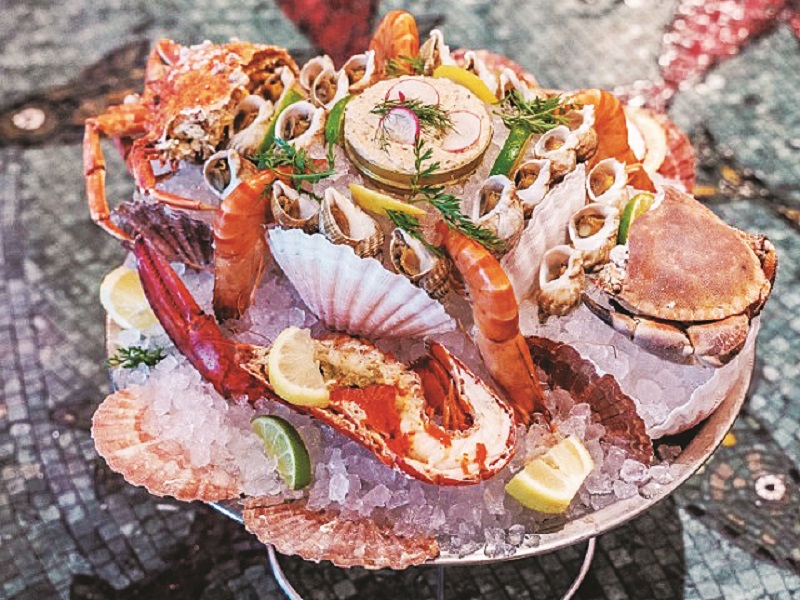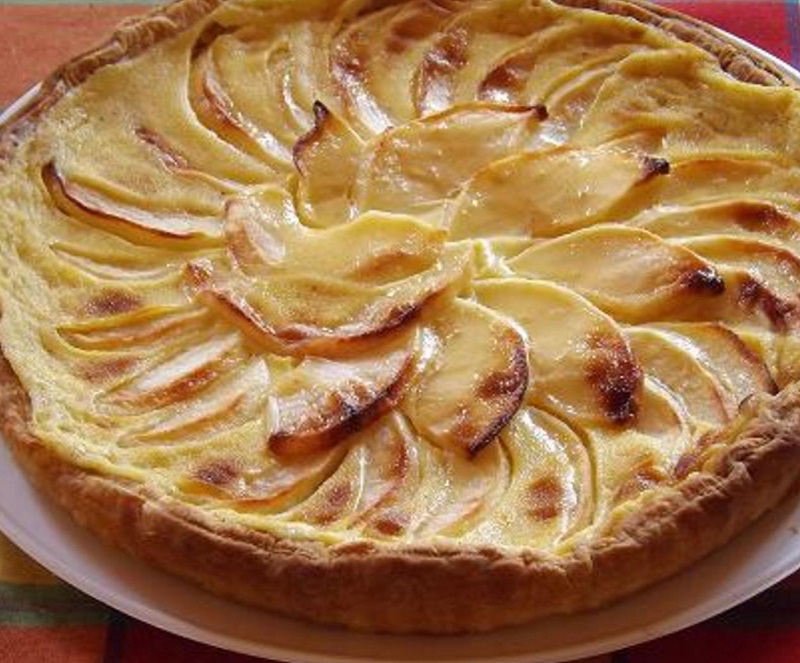
"What a city or country has to offer in terms of its cuisine is very telling," said Roland (Photo: SooPhye)
It might have been Winston Churchill who quipped how “the stomach governs the world”, but it is undoubtedly the French who pioneered cuisine as a diplomatic tool. As divisive as international politics may be, it is the table, heavy-laden with sumptuous offerings, that oftentimes brings people together. After all, it was none other than the great strategist and diplomat Charles-Maurice de Talleyrand-Perigord who is said to have told Napoleon Bonaparte: “Give me a good chef and I will give you good treaties.” It is a sentence the French ambassador to Malaysia, His Excellency Roland Galharague, fully agrees with. “Yes, it is true. Talleyrand was known to have remarked how the best and most important aid to an ambassador is his cook.”
Historically, it was during the Congress of Vienna (1814-1815) that Talleyrand really made his name as a statesman, aided by the great Marie-Antoine Carême, who was under his employ as chef de cuisine. “His food was known to be good, so Talleyrand could easily smooth the way for talks and get meetings organised between people who would otherwise not meet,” observes Galharague. The result? The wily statesman emerged as one of the major negotiators of the high-level diplomatic assembly, which went on to provide a long-term peace plan for Europe.
_s1a6558a.jpg
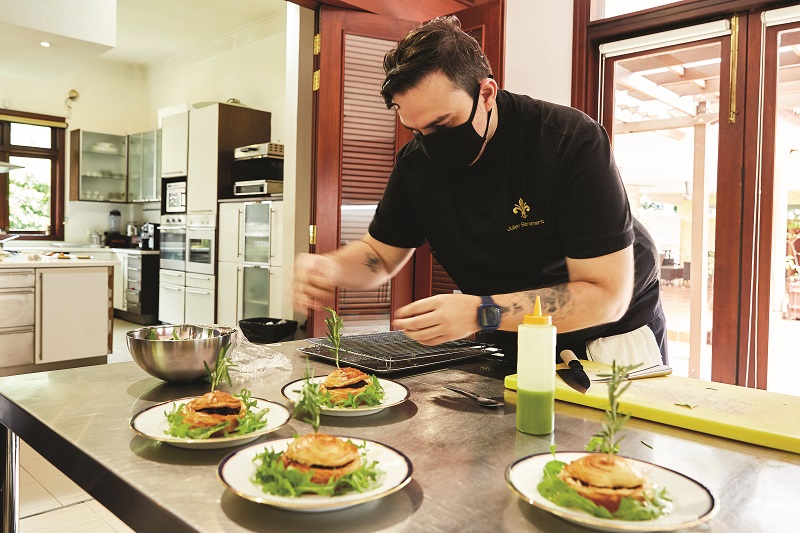
Fast forward to modern times, the situation and goals remain unchanged, but not the players. It was not long ago that French chefs reproduced a 1962 meal — served to French president Charles de Gaulle and German chancellor Konrad Adenauer after World War II — for France’s Francois Hollande and Germany’s Angela Merkel. Starring beef filet and raspberry macarons, the diplomatic banquet offered a smooth touch to mark 50 years of Franco-German reconciliation as well as ease any lingering fraught relations over the eurozone crisis.
The ambassador himself remembers an occasion as a young diplomat. “It was at the Dayton Peace Agreement talks in Ohio, the US, and the site of one of its largest and most important air force bases. My ambassador, as international mediator, had discovered there was a French restaurant called L’Auberge nearby. He decided to host a dinner party there for the representatives of Serbia, Croatia and Bosnia, all from the former Yugoslavia. His plan [for a diplomatic banquet] worked, as it was the first time they all sat down to eat together.” The agreement, which ended the bloodiest war on European soil since WWII, was officially signed later in Paris on Dec 14, 1995.
_s1a6549a.jpg
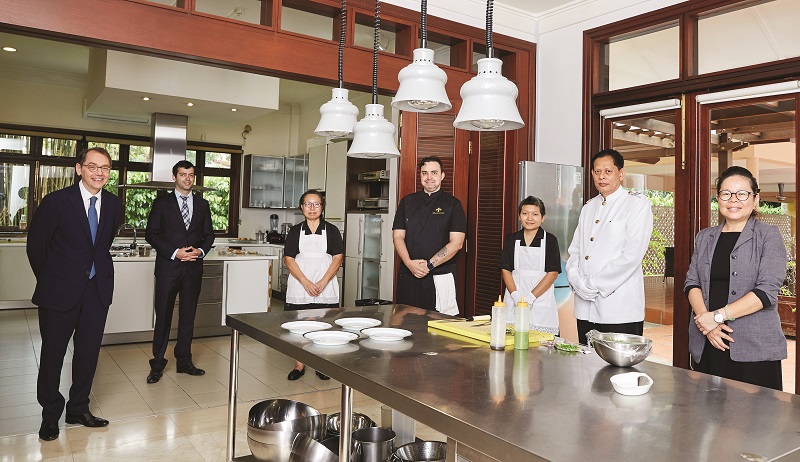
“Food is a great diplomatic and political tool. You share something when you break bread. Also, as diplomats, part of our role is to share and promote our culture. We are, of course, flattered and happy when we are told good things about our cuisine. In France, you have just about every cuisine represented, while the regional diversity is enormous,” he points out. “For example, if you miss Chinese food in Paris, go to Le President, a restaurant in Belleville, which [former president] Francois Mitterand used to frequent. Its interiors are something out of a movie set. In the 13th arrondissement, you will also find Tang Frères, part of a chain of Asian grocers. Besides Chinese, there are also incredible African and Middle Eastern foods to discover.”
As to his latest posting, he seems equally chuffed. “What a city or country has to offer in terms of its cuisine is very telling. I remember being graciously treated to makan-makan by my Malaysian counterpart in France before taking up my new position here. He took me to lunch at Nur, in the 18th district, and it was very nice indeed. What I can say is Malaysia’s food reflects its diversity and harmony. And, from what I have observed, all Malaysians like their food, same as the French. You are spoilt for choice here. From the very high end to street level, the diversity is incredible. In this aspect, Kuala Lumpur is very much like Paris. Because of Covid-19, I haven’t been around as much as I’d have liked but I have visited Penang, spent a weekend in Langkawi and done a day trip to Melaka. I am waiting to discover more.”
French ambassador to Malaysia His Excellency Roland Galharague’s crib sheet to eating well in and around France
Cheese
“I like all cheeses, no doubt. I hail from the southwest, lived in Paris a long time and have a home in Normandy, so it is hard to pick a regional favourite. But one I particularly am fond of is Ossau-Iraty, an Occitan-Basque cheese made using sheep’s milk, from the village of Itxassou. I like it very much and recommend enjoying it with cherry jam. I also must recommend the cheeses of Normandy. Camembert, of course, is one but do also try Pont-l’Évêque — a soft cheese made with cow’s milk. And mention must be made of Roquefort, which the philosopher Denis Diderot called the “king of cheese”. To be called Roquefort, the cheese must be aged in the rock caves of Mont Combalou. It might seem counterintuitive to do so, but try pairing Roquefort with Sauternes. It makes for an interesting but excellent match.”
Oysters
Oysters are another thing I cannot do without and, again, I like all varieties. For ones that are a bit big in size, I favour Marennes-Oléron. For Belon oysters, my preferred ones are from the basin of Saint-Vaast-La-Hougue in the north. Another popular destination for oysters is Cancale, also known as Brittany’s oyster capital. If you visit France in summer, stop at its harbour right on the Emerald Coast. Search out an oyster shack, buy a dozen or more and eat them right on the street. Me? I can eat them forever. Chablis is always a possibility to pair with oysters, but I have a particular liking for oysters with white Bordeaux wine, especially those from Entre-Deux-Mers — or, as you say it in Bahasa, antara dua laut. When you eat so many oysters, you might think it is a light and healthy thing. But, in France, eating oysters also calls for lots of bread and butter. The combination is incredible.
Bread
Baguette is the iconic bread of France but, when I am in Normandy, I enjoy pain au lin, or bread with linen seeds. This northwestern corner of France is famous for growing linen. For a very short time in early summer, you will see parts of the countryside covered in a sea of the linen plant’s delicate blue flowers. Miche or pain Poilâne, a round sourdough, is also very famous. Visit the original bakery along the Rue du Cherche-Midi. I remember a story, set during the end of the Cold War, about how the Soviet newspapers would publish pictures of Parisians queuing up for pain Poilâne but with the caption saying something along the lines of “See? The French too have to queue for their bread”.
Butter
Ah, French butter. The one that is exemplary is that by Jean-Yves Bordier. I have visited his shop in Saint-Malo, a fortified harbour town from which the corsair, a type of pirate or privateer but working for the king of France, used to depart. You must see the butter being shaped on-site, where someone will expertly knead it into a brick-like block. Bordier is also special, as he offers many flavours, from yuzu to seaweed and more, but my favourite is the demi-sel. Another excellent butter to try is Échiré, which is from Normandy.
Seafood
A platter of fruits de mer is indeed very French. For me, the Brasserie La Lorraine in Paris is very good. For a legendary place, there is, of course, the Art Deco-style La Coupole in Montparnasse, which was a favourite with the artistic and literary community of the Roaring Twenties. For bouillabaisse, go to Marius et Janette at the Avenue George V, a restaurant to which I have been several times.
Sweets
I am happy to stay at the cheese course when it comes to ending a meal, but French desserts are hard to resist. I like the macaron, but as I am originally from the southwest, the canelé is my preference. I also like fresh fruit tarts. If you go to Normandy, a land whose food is all about cream and butter, please search for and try a Tarte Normande. It is essentially an apple tart but different from apple tarte tatin, as it is eaten cold whereas the latter is eaten hot. The Tarte Normande is usually filled with apple slices, wrapped in a blanket of heavy cream — and sometimes Calvados — and baked
under a buttery crust.
The sixth edition of Goût de/Good France, which took place from Oct 14 to 22, was an international initiative by the French Ministry for Europe and Foreign Affairs and Alain Ducasse, in partnership with the Centre-Loire Valley Region. It celebrated French gastronomy through a series of events organised to support the entire sector.
This article first appeared on Oct 18, 2021 in The Edge Malaysia.

